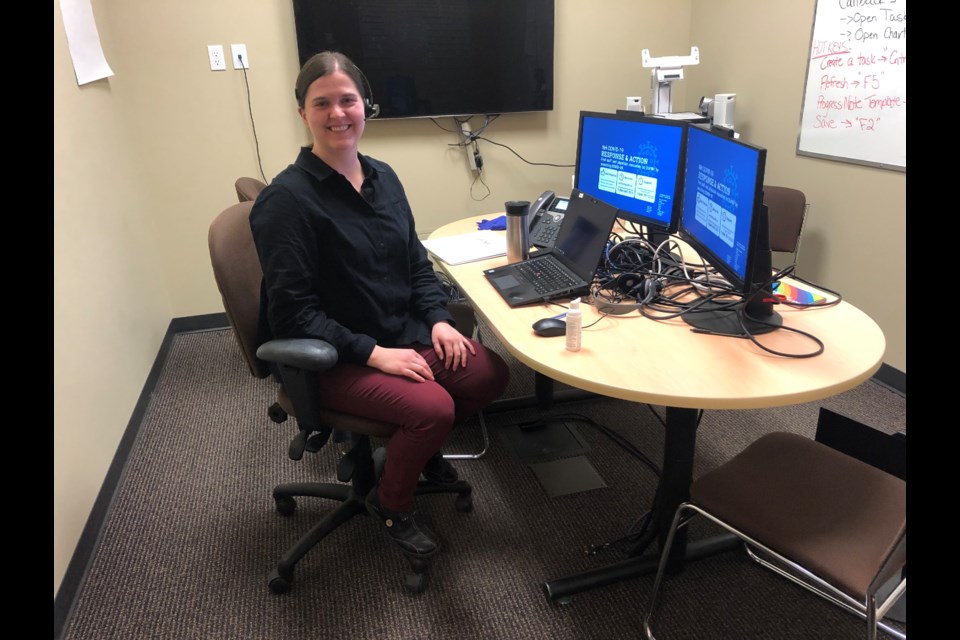When COVID-19 first reared its ugly head in B.C., a rapid response was needed to help worried citizens who needed answers from qualified sources.
People wanted to know if they had the virus, what the symptoms were, and whether they needed to see a doctor or go to the hospital for testing.
Recognizing the extent of the problem before it even became a pandemic, the Northern Health authority was tasked with setting up a 24-hour/seven-day-a-week online clinic and information phone line to deal with the crush of people clamouring for answers.
A team of doctors, nurses and nurse pratitioners was gathered to staff the phone lines to provide health advice, virtual screening and assessment services. One of the purposes of the service was to minimize the number of people going to hospital emergency wards if they thought they were developing COVID-19 symptoms and reduce the potential threat of spreading the virus to health-care workers.
“Things rapidly changed and we needed to do some online visits for the general public to augment what family physicians were doing so we set up a call centre very quickly,” said Jeff Hunter, Northern Health’s chief information officer.
“We set this whole thing up in about 36 hours,” he said. “We had to build the whole thing so we could off-site it, because we didn’t want a whole bunch of people in the building with the problem that those folks could get COVID. So we had to build a virtual call centre for people to be able to work from home. That was hard at first because we had to train people to use the technology and use the phone systems.”
Calls to the information line at 1-844-645-7811 are screened by agents and if the caller is showing some of the COVID-19 symptoms that person will be passed on to a nurse for further assessment. If the nurse determines a more thorough investigation is needed the caller will be connected to a doctor or nurse practitioner using video teleconferencing technology.
Since the online clinic was set up March 14 and as of Friday morning service has received about 9,700 calls. Four thousand eight-three of those calls involved nurses and 2,753 were sent to doctors or nurse practitioners for online visits. They have been acting on information from the provincial health ministry and B.C. Centre for Disease Control. During the early weeks of the pandemic that advice was changing daily as more became known about the efforts to control the spread of COVID-19. Before the pandemic, many of the doctors in the region were already adopting video appointments to provide the service to their patients. Doctors are still seeing patients for in-person visits and their offices will arrange those visits while keeping safety as a priority.
“The physicians and nurse practitioners that participate in this call centre have been spectacular, really good to work with and helped us work through the kinks in technology and were really patient with that kind of stuff, and they were obviously key to making this successful” said Hunter. “The Prince George Division of Family Practice were really helpful in getting things started up. We’ve learned a lot through the process, just simple things like people not knowing how to turn the microphone on or they’re on a phone call and they have to convert to video with the same device that they’re on the phone call with.”
Northern Health connects with patients on thousands of telehealth visits each year but most of those are for specialist referrals, pharmaceutical advice or oncology (cancer) appointments. During the pandemic, with fewer people going to doctors’ offices and many avoiding hospitals, the number of primary care virtual visits skyrocketed.
“At the beginning we were getting 1,000 calls a day and there were some busy signals and part of the reason we turned this up was to help alleviate the situation with 811 (provincial health information and advice line) busy signals,” said Hunter. “We did utilize extra staff that were in quarantine or their duties had shifted and we were able to call in extra staff and get those numbers down. We ran a 24/7 service for all tiers of service at the beginning and we found that the physician or nurse practitioner at night wasn’t used very much so we redirected that capacity to daytime.
“It has slowed down. Certainly there was a lot of information-requesting calls in the beginning and it’s kind of normalized into a regular daily pattern.”



